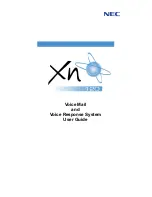
GE Multilin
L60 Line Phase Comparison System
9-11
9 APPLICATION OF SETTINGS
9.3 POTT SIGNALING SCHEME
9
9.3POTT SIGNALING SCHEME
9.3.1 DESCRIPTION
This scheme is intended for two-terminal line applications only.
This scheme uses an over-reaching Zone 2 distance element to essentially compare the direction to a fault at both the ends
of the line.
Ground directional overcurrent functions available in the relay can be used in conjunction with the Zone 2 distance element
to key the scheme and initiate its operation. This provides increased coverage for high-resistance faults.
Good directional integrity is the key requirement for an over-reaching forward-looking protection element used to supple-
ment Zone 2. Even though any FlexLogic operand could be used for this purpose allowing the user to combine responses
of various protection elements, or to apply extra conditions through FlexLogic™ equations, this extra signal is primarily
meant to be the output operand from the Neutral Directional IOC. Both of these elements have separate forward (FWD)
and reverse (REV) output operands. The forward indication should be used (NEUTRAL DIR OC1 FWD).
An important consideration is when one of the line terminals is open. It is then necessary to identify this condition and
arrange for a continuous sending of the permissive signal or use a slower but more secure echo feature to send a signal to
the other terminal, which is producing the fault infeed. With any echo scheme however, a means must be provided to avoid
a permanent lock up of the transmit/receive loop. The echo co-ordination (ECHO DURATION) and lock-out (ECHO LOCK-
OUT) timers perform this function by ensuring that the permissive signal is echoed once for a guaranteed duration of time
before going to a lockout for a settable period of time.
It should be recognized that in ring bus or breaker and a half situations, it may be the line disconnect or a combination of
the disconnect and/or the breaker(s) status that is the indication that the terminal is open.
The
POTT RX PICKUP DELAY
timer is included in the permissive receive path to ride through spurious receive outputs that
may be produced during external faults, when power line carrier is utilized as the communications medium.
No current reversal logic is included for the overreaching phase and ground distance elements, because long reaches are
not usually required for two terminal lines. A situation can occur however, where the ground distance element will have an
extended reach. This situation is encountered when it is desired to account for the zero sequence inter-circuit mutual cou-
pling. This is not a problem for the ground distance elements in the L60 which do have a current reversal logic built into
their design as part of the technique used to improve ground fault directionality.
Unlike the distance protection elements the ground directional overcurrent functions do not have their reach well defined,
therefore the current reversal logic is incorporated for the extra signal supplementing Zone 2 in the scheme. The transient
blocking approach for this POTT scheme is to recognize that a permissive signal has been received and then allow a setta-
ble time
TRANS BLOCK PICKUP DELAY
for the local forward looking directional element to pick up.
The scheme generates an output operand (POTT TX) that is used to transmit the signal to the remote end. Choices of com-
munications channel include Remote Inputs/Outputs and telecommunications interfaces. When used with telecommunica-
tions facilities the output operand should be assigned to operate an output contact connected to key the transmitter at the
interface. Power Line Carrier (PLC) channels are not recommended for this scheme since the PLC signal can be inter-
rupted by a fault.
For proper operation of the scheme the Zone 2 phase and ground distance elements must be enabled, configured and set
per rules of distance relaying. The Line Pickup element should be enabled, configured and set properly to detect line-end-
open/weak-infeed conditions.
If used by this scheme, the selected ground directional overcurrent function(s) must be enabled, configured and set accord-
ingly The output operand from the scheme (POTT OP) must be configured to interface with other relay functions, output
contacts in particular, in order to make the scheme fully operational. Typically, the output operand should be programmed to
initiate a trip, breaker fail, and auto-reclose, and drive a user-programmable LED as per user application.
Summary of Contents for L60
Page 10: ...x L60 Line Phase Comparison System GE Multilin TABLE OF CONTENTS ...
Page 57: ...GE Multilin L60 Line Phase Comparison System 2 27 2 PRODUCT DESCRIPTION 2 3 SPECIFICATIONS 2 ...
Page 58: ...2 28 L60 Line Phase Comparison System GE Multilin 2 3 SPECIFICATIONS 2 PRODUCT DESCRIPTION 2 ...
Page 482: ...6 26 L60 Line Phase Comparison System GE Multilin 6 5 PRODUCT INFORMATION 6 ACTUAL VALUES 6 ...
Page 554: ...10 8 L60 Line Phase Comparison System GE Multilin 10 2 BATTERIES 10 MAINTENANCE 10 ...
Page 674: ...B 110 L60 Line Phase Comparison System GE Multilin B 4 MEMORY MAPPING APPENDIX B B ...
Page 704: ...C 30 L60 Line Phase Comparison System GE Multilin C 7 LOGICAL NODES APPENDIX C C ...
Page 720: ...E 10 L60 Line Phase Comparison System GE Multilin E 1 PROTOCOL APPENDIX E E ...
Page 732: ...F 12 L60 Line Phase Comparison System GE Multilin F 2 DNP POINT LISTS APPENDIX F F ...
Page 742: ...H 8 L60 Line Phase Comparison System GE Multilin H 3 WARRANTY APPENDIX H H ...
















































